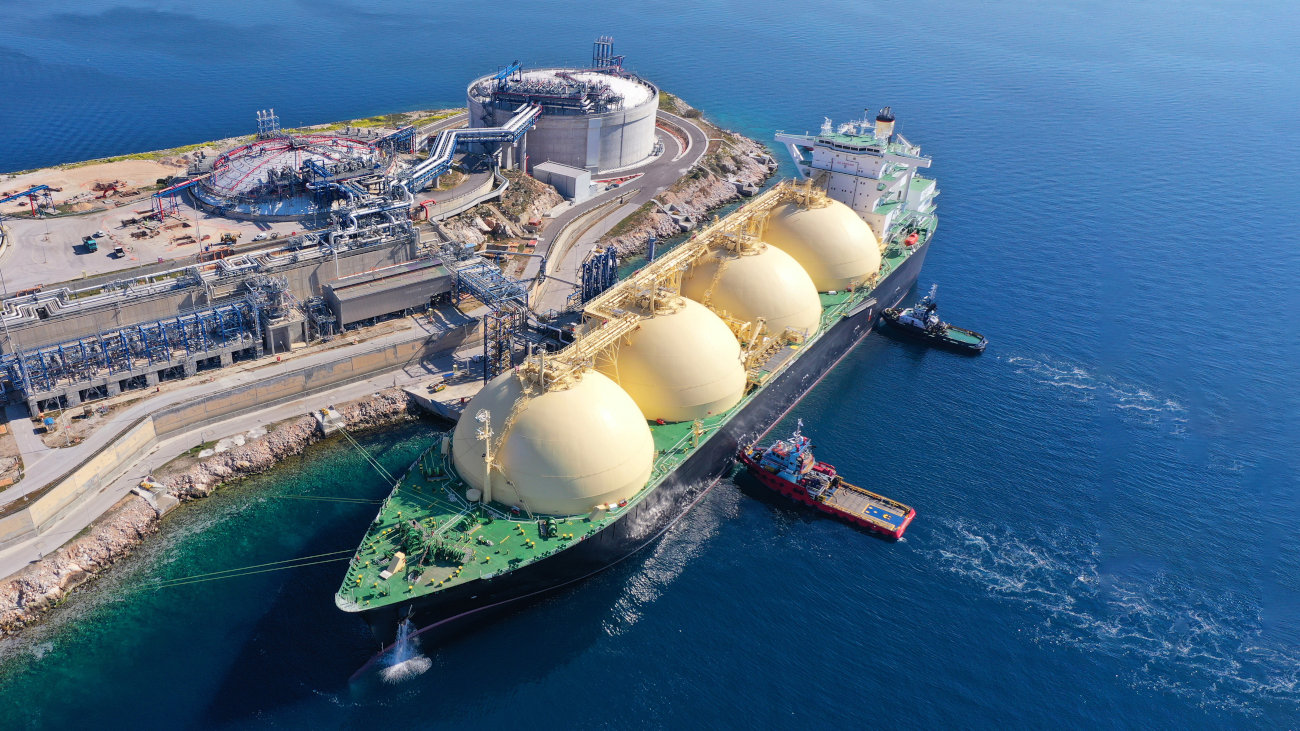Hydrogen is critical to deep decarbonisation of LNG facilities
Hydrogen and carbon capture are likely to be pivotal for deep decarbonisation of LNG facilities, beyond traditional electrification and efficiency gains.
There is no “one size fits all” solution – each LNG site requires a tailored roadmap based on local context, technology and available infrastructure.
Mott MacDonald’s broad industry knowledge of LNG, carbon capture storage and hydrogen processes is key to supporting clients in preparing for the energy transition.
Hydrogen and carbon capture present significant opportunities to decarbonise existing and new liquified natural gas (LNG) facilities. However, local context and technology have a big role to play in finding the right solution for each site, explains Mott MacDonald hydrogen and LNG lead Jamie Paul.
Liquified natural gas – LNG – has long been seen as a lower carbon option compared to other fossil fuels, but there is strong potential to further decarbonise both liquefaction and regasification processes. Using hydrogen and carbon capture is key to achieving this and co-locating these technologies can also bring synergies reducing cost and improving efficiency.
This potential was a hot topic of conversation at the GasTech conference in Milan in September, but the discussions highlighted the challenges that lie ahead in achieving this drive to net zero emissions in LNG.

Once LNG plants have gone beyond the low hanging fruit of electrification and efficiency gains to reduce their carbon intensity, there are other options to drive greater decarbonisation. Based on my team’s experience in the sector, hydrogen and carbon capture appear to have the greatest potential.
Within these two areas, however, there are several different approaches and there is no “one size fits all” solution, so specialist advice is critical to delivering the deep decarbonisation these projects set out to achieve.
Decarbonising LNG
Emissions within the LNG value chain are driven by energy intensive liquefaction – primarily the power consumption of the refrigeration compressors – as well as shipping and heat input during regasification.
Hydrogen can be blended into fuel gas to decarbonise compressor gas turbine drivers, power generators and regasification vaporisers. Carbon capture can also be applied directly to gas turbines within facilities and the LNG site can also act as a hub for the liquefaction, transportation and storage of CO2.
In the longer term, there is the possibility of co-locating hydrogen production, liquefaction, regasification or CO2 liquefaction at LNG terminals. This would create both synergies and alternative revenue stream for terminals. It will also future-proof LNG facilities as the 2050 net zero transition drives industries to move away from all fossil fuels, even those that are viewed as being lower carbon.
Creating a roadmap
We have worked with clients on a broad range of LNG, carbon capture and hydrogen projects throughout the project lifecycle. Through this work, we understand that the key to decarbonising LNG projects comes from developing a tailored solution for each facility and a roadmap for implementation.
These roadmaps usually start by ensuring efficiency gains and electrification potential has been fully deployed, for example, in areas of high renewable potential, full electrification may be possible. The next stage is looking at options to incorporate low carbon technologies and fuels, such as incremental blending of hydrogen into fuel gas or use of carbon capture. Later on, consideration should be given to the benefits of co-locating carbon capture and storage or hydrogen processes with LNG.
The right option for each site will depend on a range of factors including local availability of renewable power, proximity to carbon emitters and local users for hydrogen.
Local and technical context
The potential for decarbonisation at a specific LNG facility will depend on the local context, such as whether there is renewable power available for electrification and the presence of a hydrogen economy in the region to either power the facility or for distribution. The opportunity for the facility to work as a carbon capture hub will also depend on the density of CO2 emitters nearby, the infrastructure needed for collection and an export route for sequestration.
Having the space for new equipment and infrastructure to enable these lower carbon operations at an LNG facility is also critical. Consideration is already being given to incorporating these processes to existing LNG facilities. For example, the Medway Hub carbon capture storage project on the Isle of Grain in the UK is looking at liquefaction storage and export of CO2 from the existing LNG terminals. Given that TotalEnergies, Equinor and Shell’s Northern Lights carbon transfer and storage project is now operational in the North Sea, it would be an obvious export route for the captured CO2 collected at the Medway Hub.
Some of the technical challenges to the incorporation of hydrogen and carbon capture include the limit on hydrogen blending in existing equipment, the need for scaling up of hydrogen and carbon capture infrastructure and safety concerns. Addressing safety, particularly regarding hydrogen's unique properties and the risks associated with CO2 handling, will call for LNG facilities to adapt their design and operation. This would include, for example installing different gas detection systems and upskilling operatives on the challenges associated with hydrogen and CO2.
Both the local market and technical challenges are complex, but none of these issues are insurmountable. The conversations at GasTech underlined to me how our broad industry knowledge of LNG, carbon capture storage and hydrogen processes, along with being able to call on multidisciplinary expertise from across our business, allows us to support our clients in preparing for the energy transition.
Integration of hydrogen and carbon capture into LNG terminals may still be at an early stage, but I expect that over the next five years, this could grow significantly. To get there within that timeframe, now is the time for action and collaboration to ensure the LNG sector plays its full role in reaching net zero.
Subscribe for exclusive updates
Receive our expert insights on issues that transform business, increase sustainability and improve lives.


